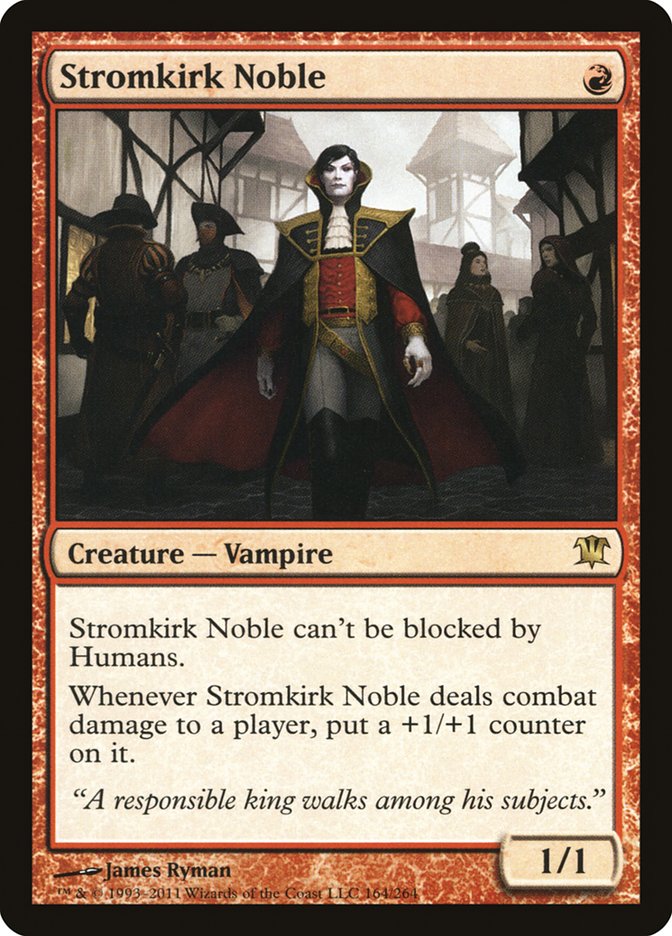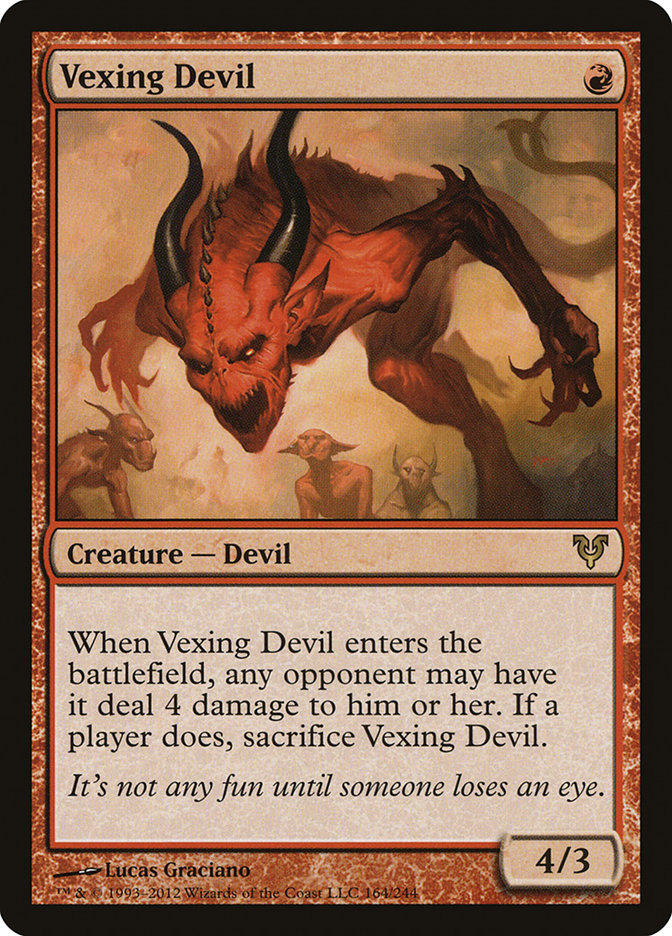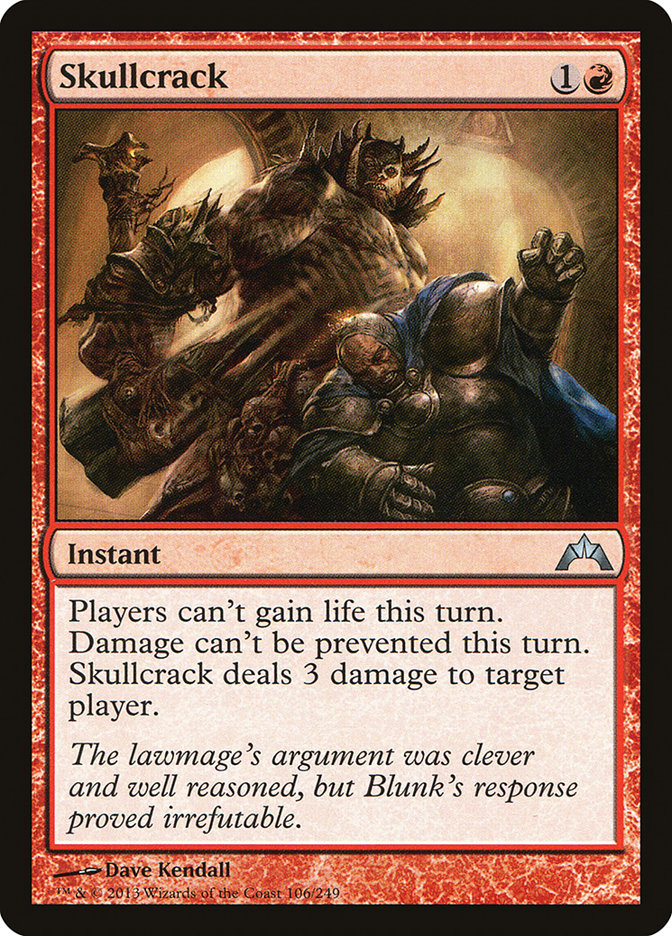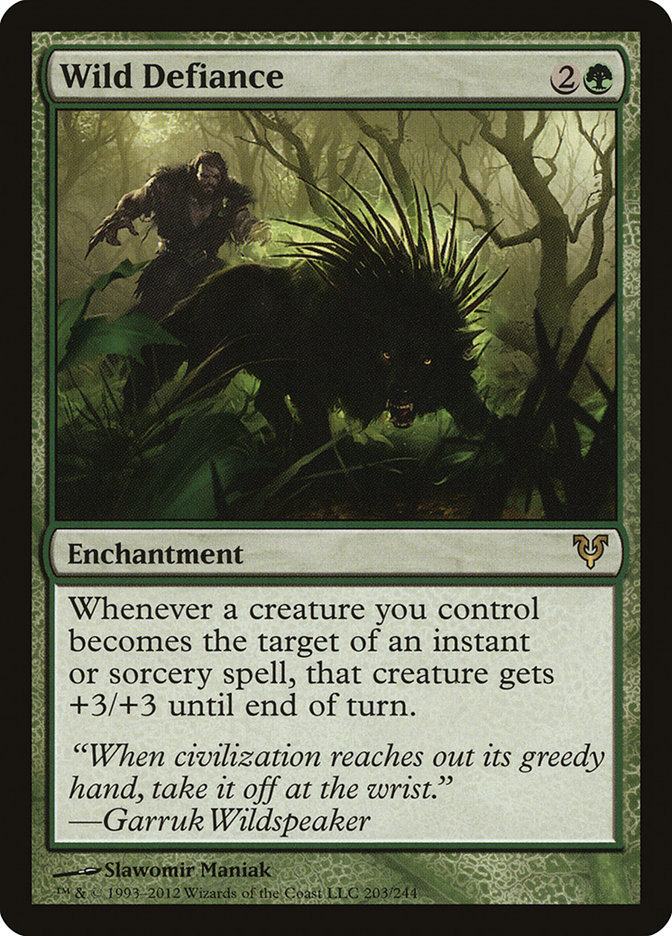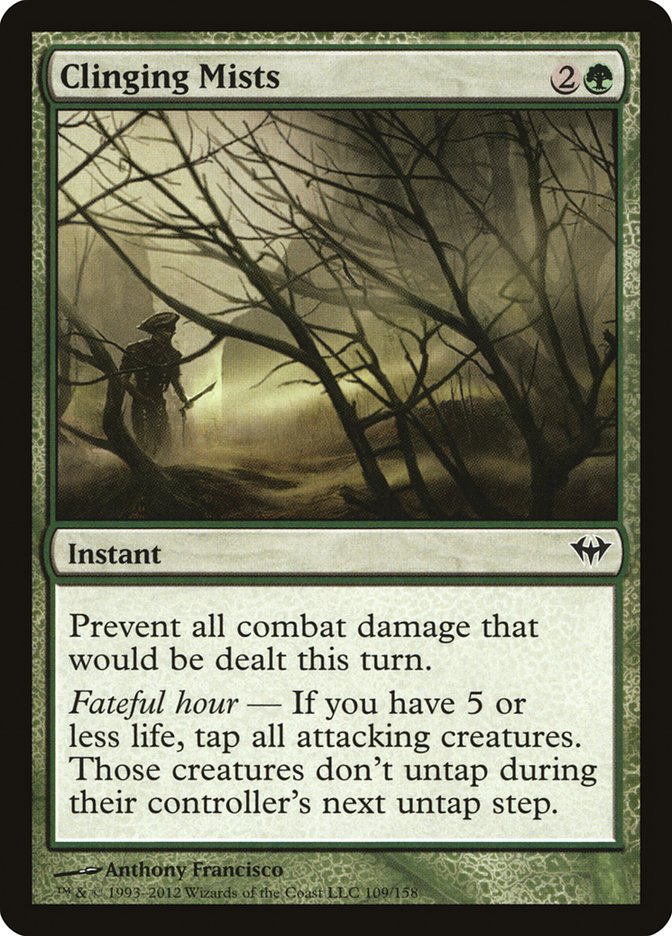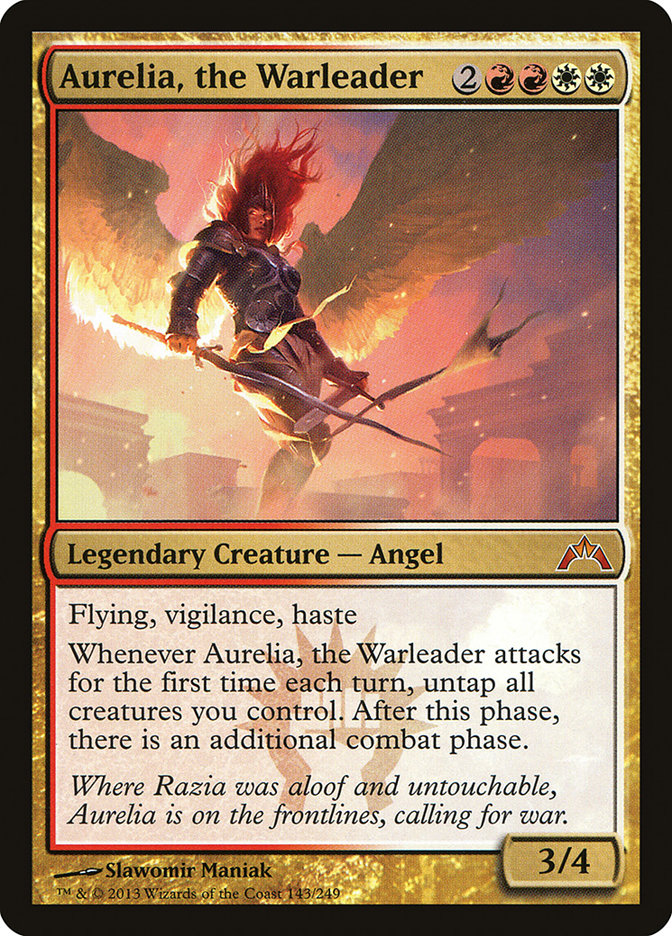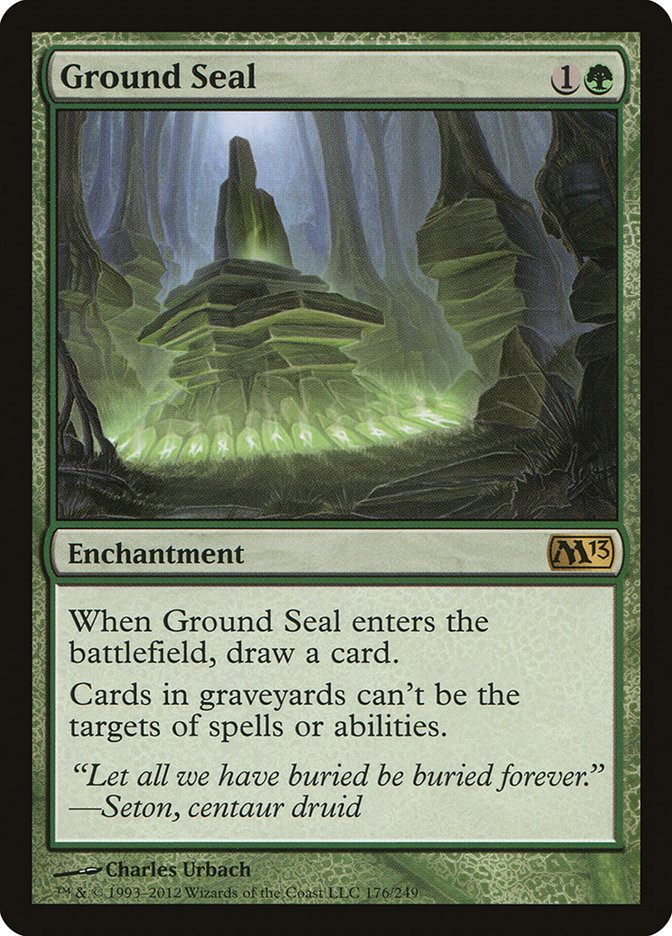One thing about this Standard format: it sure seems topsy-turvy.
Let’s take a look at the last few SCG Standard Opens to get a sense of what I mean, starting with the most recent and ending with last month’s event in Nashville (covered by me and Osyp Lebedowicz). For good measure, let’s also toss in the last WMCQ in the US. In this way, I hope to give you a sense of Standard as I’ve seen it as a competitor, as a commentator, and as a spectator.
The asterisk(*) denotes the winner.
Jund – 1*
R/G Aggro – 1
Bant Hexproof – 1
Reanimator – 2
Bant Control – 1
Naya Blitz – 1
B/G Zombies – 1
The Aristocrats – 1*
Naya Blitz – 2
Naya Midrange – 1
U/W/R Geist – 2
Jund – 1
Esper Control – 1
Junk Aristocrats – 1*
Naya Aggro – 3
B/R Zombies – 1
BUG Control – 1
Jund – 1
Reanimator – 1
6-1 – WMCQ Chicago, IL (no decklists)
Bant Hexproof – 3*
Naya Aggro – 1
Esper Control – 1
Reanimator – 1
The Aristocrats – 1
Junk Aristocrats – 1
Naya Aggro – 2*
U/W/R Control – 2*
Bant Hexproof – 1
R/G Aggro – 4
The Aristocrats – 1
Jund – 2
G/W Aggro – 1
Reanimator – 2
Peddle to the Metal – 1
Reanimator – 2*
Naya Blitz – 2
Naya Aggro – 1
B/G Midrange – 1
Four-Color Control – 1
Jund Aggro – 1
The first thing to note is the wildly diverse metagame, at least in terms of archetype specifics. It practically seems that week-to-week very different decks are showing up.
A part of this can certainly be attributed to the nature of the SCG Open metagame. What it boils down to is simple: there is such a thing as a regional metagame. I was talking with Osyp, Chris Andersen, and some others about this phenomenon in Nashville. In Chicago, for example, there tends to be more players who are interested in burning your face. In Indiana, there tends to be more players who are interested in creature swarm attacks. In the Northeast, there tends to be more players who prefer control or combo.
Now, this does not mean that these archetypes are the best choices for a tournament or even that they will win in a region. It is just that these archetypes tend to be slightly more represented in the field at large.
Looking a bit more closely, though, we can see another trend. First, here is the combined data for the seven events events, again with an asterisk per actual win, with some archetype merging:
8 Top 8: Reanimator*, Naya (non-Blitz)*
7 Top 8:
6 Top 8:
5 Top 8: Bant Hexproof*, R/G Aggro, Naya Blitz, Jund*
4 Top 8: U/W/R Good Stuff*
3 Top 8: The Aristocrats*
2 Top 8: Junk Aristocrats*, Esper Control, Zombies
1 Top 8: G/W Aggro, Jund Aggro, Bant Control, BUG Control, Four-Color Control, G/B Midrange, Peddle to the Metal
There are certainly some clear top dogs, but it still seems reasonable given this result to call the metagame as a combination of these decks for the most part:
Midrange: Reanimator, Big(ger) Naya, Jund, The Aristocrats, Junk Aristocrats
Aggro: Bant Hexproof, R/G Aggro, Naya Blitz
Control: U/W/R Good Stuff
Now, there might be some debate on the nature of the U/W/R decks, but they basically boil down to two variants: more controlling decks, like the one used by Ken-Min Yeoh to win one of the two Dallas events, and more aggressive decks, like the one used by Alex Blackard with Geist of Saint Traft and Thundermaw Hellkite. Both, though, share the following traits: actual countermagic, burn (including Warleader’s Helix), Snapcaster Mage, Sphinx’s Revelation, and Azorius Charm. Here are those two decks:
Creatures (3)
Planeswalkers (2)
Lands (26)
Spells (29)
- 2 Dissipate
- 1 Syncopate
- 3 Think Twice
- 1 Essence Scatter
- 1 Terminus
- 2 Pillar of Flame
- 2 Searing Spear
- 1 Mizzium Mortars
- 3 Azorius Charm
- 3 Supreme Verdict
- 1 Detention Sphere
- 4 Sphinx's Revelation
- 1 Assemble the Legion
- 2 Turn
- 2 Warleader's Helix
Sideboard

Creatures (13)
Planeswalkers (2)
Lands (23)
Spells (22)
- 1 Dissipate
- 1 Island
- 2 Syncopate
- 3 Pillar of Flame
- 3 Searing Spear
- 1 Mizzium Mortars
- 4 Azorius Charm
- 1 Detention Sphere
- 2 Sphinx's Revelation
- 2 Turn
- 2 Warleader's Helix
Sideboard

Taken altogether, the metagame above makes it pretty clear: this is not a land of traditional control. This is, instead, a land of midrange decks that are more or less controlling and hyperaggro decks. Control exists, but only at the margins.
This makes a lot of sense if you think about the push that Wizards of the Coast has made towards making creatures better than spells, as they have said was their goal. The end result is unsurprising: what is on the board is the king.
There are a lot of ways to fight over the board, of course. Two aggressive decks might engage in a grand race, with a stumble or a trick pushing one over the other or a large Elephant holding the ground while damage ekes over. Two midrange decks might trade haymakers, or one might simply make a devastating play that is backbreaking from which the other doesn’t recover. The thing about the variety in successful decks in this metagame can largely, I think, be tied to the specific combination of decks that happened to show up on the day and the ones you face.
This can, in many ways, be maddening. At the WMCQ, I started out 9-0-1 in matches with Esper Control before being eliminated by Brandon Nelson with Naya Midrange. I felt very good about my deck. The next day, at the PTQ, I dropped before lunch to play Cube. Was my deck suddenly bad? I just hit the wrong end of the metagame, falling first to a red-based aggressive deck in a close match and then hitting another in the next round.
Ultimately, I believe what this means for most people, if you’re playing in a competitive field, is that you shouldn’t necessarily take a bad tournament as a sign that your deck is done for. Rather, you have to do the harder work yet: reevaluate your deck’s performance against a slightly more antagonistic portion of the metagame and tournament-to-tournament make your best educated guess as to whether the favorable or unfavorable metagame will be in the room.
It can be easy to simply jump around wildly from deck to deck. But in many ways, this hinders your chances for success. The best decks in this format are all very good, and the more time you spend not playing any particular deck, the less comparatively skilled you are likely to be with it than another player. Most of us don’t have time to play all the decks a lot, so as a result you have to pick and choose your time. Getting spooked, if your deck is still as good tomorrow as it was yesterday, does you no good.
At the same time, if you aren’t tied down to one deck or you don’t think you’ve built up any special advantage skill-wise with your deck, hopping to another deck isn’t that big of a deal. Pick a good one and you’ll be fine.
If you’re looking for one, well, how about a deal: here are three.
Be Aggressive, B-E Aggressive
I built this deck after being quite impressed by my round 1 opponent’s take on red-based aggro. Specifically, one of the things that impressed me was this sequence: turn 1 Stromkirk Noble, turn 2 Burning-Tree Emissary into Armed (of Armed // Dangerous). This was pretty devastating, and it reminded me of my Naya Aggro list’s ability to make crazy plays with Boros Charm. Particularly after making note of the success that Drew Neperud had with R/G last month, including with Armed // Dangerous, I decided to merge the two lists.
Creatures (28)
- 4 Stromkirk Noble
- 4 Vexing Devil
- 4 Ash Zealot
- 4 Rakdos Cackler
- 4 Burning-Tree Emissary
- 4 Ghor-Clan Rampager
- 4 Boros Reckoner
Lands (10)
Spells (22)
Sideboard

This deck is running a few cards that I’m not excited about, namely Stromkirk Noble and Vexing Devil.
A lot of you might be surprised to see these two cards uttered in the same breath since Stromkirk Noble is widely viewed as a clear candidate for inclusion in red-based aggro and currently Vexing Devil is viewed as a clear card to avoid, but allow me to explain.
As a commentator, for a very long while I’ve been watching Stromkirk Noble, and I’ve been disappointed by it. By far it is the least well-performing aggressive one-drop in red, easily behind Rakdos Cackler (the best performing) and even Stonewright. "What measure are you using?" you may ask. Simple: how much damage the card does in games I’ve played or witnessed. I counted every time. It was incredibly rare that Stromkirk Noble ever did more than three damage, and usually it managed to get in one damage before it died (triggering a Hellrider counts towards Hellrider, not Noble, damage from a Ghor-Clan Rampager’s bloodrush counts for GCR).
Rakdos Cackler generally got in two or four damage, and the times that it got in six, while rare, mark the moment where Noble finally catches up. Still, though, it performed wildly better. Even lowly Stonewright would typically completely match the Noble—but with the added bonus of these huge occasional bursts of one trillion damage or so.
With "four damage" being a good litmus test, a card like Vexing Devil actually starts to look good, as it is basically hitting par when it is destroyed immediately, particularly when you factor in the chance that a game can just implode off of the reach this deck is capable of.
Noble, not being a card I consider as good as Cackler or Devil, still gets the nod above Stonewright, a card I also think of as better, and a big reason is the inclusion of Armed // Dangerous, which I’m borrowing from Colin (the player who beat me at the PTQ) and Drew (who won an earlier PTQ with it).
With Armed // Dangerous on turn 2, you have ten damage on a Devil (should they be foolish enough to not just pay four), six on a Cackler, and, importantly, five on a Noble, with the added bonus of having a three-power Stromkirk Noble in play now. The Devil is not a likely scenario, but with the Noble and Cackler you are talking an immediate four damage for two mana, with the upside of having a truly dangerous Noble in play now.
Should you happen to draw the card later in the game, it can serve as a problematic semi Falter or an utter nightmare in conjunction with Boros Reckoner (by giving Reckoner "Lure"). If you combine it with Burning-Tree Emissary, you can create some very potent turns in the early games. If you combine it with Ghor-Clan Rampager, you will often find that the game completely goes away from the opponent.
The deck also features four Pillar of Flames, a card I feel is a necessity in a metagame filled with Voice of Resurgence, other aggressive decks, and various mana creatures. This deck is not running Hellrider, and I’m still looking into whether that choice is correct or not. Currently, I’m still running without it, largely because the cards I’d need to cut would either be the ample burn (a choice I think is important right now), the four Boros Reckoners (again, a choice I like in such an aggro- and midrange-heavy format), or simply discard the red base in favor of a more even R/G split and wildly changing up the creature mix.
The sideboard is a combination of cards to keep people off of their game plan: Electrickery for decks like The Aristocrats that lean on Lingering Souls and friends, Ground Seal against the graveyard, Skullcrack against life gain, Traitorous Blood against bigger blockers, various Fogs for the race, Domri Rade for the grind, and Wild Defiance against red removal.
I think some of these warrant a little discussion.
Skullcrack is not my favorite kind of sideboard card. Usually, when I’m playing a more controlling deck with life gain, I’m not that concerned about Skullcrack, largely because I have such an abundance of life gain that a single Skullcrack won’t stop my plan. Still, I don’t think that we’re seeing much of that right now. With the pressure this deck can put on, I’m just hoping to stop a small instance of life gain in the course of a race that might be underway, whether it is versus enchanted monsters or a single Thragtusk. As such, I only want the smallest amount of Skullcrack, but I do still want some.
Wild Defiance is a bit strange, but it boils down to the ways in which Armed // Dangerous and Ghor-Clan Rampager can be interrupted by an opposing red-based deck (or even a U/W/R deck, of course) and making that difficult. Mizzium Mortars in particular is a card that can usually be foiled by a Wild Defiance in play. Much like I mentioned a few weeks ago, however, there is a real diminishing returns with a card like this, so playing more than one or two in a board is far too ambitious.
Fog and Clinging Mists are both a part of the plan against a deck you are racing. I started without any card like this, but ultimately it stopped being an acceptable plan to just allow Bant Hexproof the option of running away with the match if they landed a single enchantment. I’m not happy with these cards exactly, but they are a part of the package you need in order to have a chance to win.
Moving on…
Hulk SMASH
No, this is not Vintage Psychatog going Berserk.
Creatures (23)
- 4 Avacyn's Pilgrim
- 4 Thundermaw Hellkite
- 3 Aurelia, the Warleader
- 4 Ghor-Clan Rampager
- 4 Boros Reckoner
- 4 Voice of Resurgence
Lands (23)
Spells (14)

This deck is a step bigger than most of the Naya Midrange/Aggro lists that you’ve probably seen out there. Take a deck like Willy Edel’s and you’ll see what I mean; instead of using cards like Flinthoof Boar, this deck takes a step up the ladder and goes to cards like Advent of the Wurm and Aurelia, the Warleader.
One of the things I liked about this deck when I was testing it at #SCGNASH between rounds was that it utterly devastated other midrange decks. A part of the reason was that the deck was able to simultaneously stand toe-to-toe with their midrangey cards while also being able to just kill the opponent. A weakness of the deck, though, is that it is less reasonable against decks that are full of the most aggressive cards.
This is a pretty big trade-off. Ultimately, if you’re expecting a field filled with Naya Blitz, this is not your deck. But if you’re expecting Jund, Jund, and more Jund, this is a good deck to consider playing.
Most of the cards are pretty straightforward compared to the slower builds of Naya. A card like Advent of the Wurm is clearly a very powerful spell; even when it doesn’t necessarily make the cut for a lot of Naya decks, it is often still in the conversation. More radical are the three Aurelias.
If you want to be a little more conservative, you could cut down to two Aurelias and fit in another Selesnya Charm or Oblivion Ring to have more answers. Ultimately, though, I ended up with three Aurelias because of the ability of the card to just end games. Again and again, I found myself hoping to topdeck an Aurelia—and if I did, I won the game.
If you find yourself always hoping to draw a card, it could be a sign that you want another copy.
It was the same thing with Ghor-Clan Rampager, but in this case the shift up was to four copies. Ghor-Clan was a card that was in the running for a long time, but as I got more impressed with Aurelia, Ghor-Clan Rampager became even more powerful. It also gains a ton of shocking damage potential because of Boros Charm in the deck, a card that was initially in the deck representing "the best counterspell in Standard" but eventually became a combination Liliana of the Veil killer, Supreme Verdict counter, and Fireblast.
Following the advice of Osyp Lebedowicz and Brian Kowal, I was up to three copies of Aurelia. I was happy in testing moving up to four copies of Ghor-Clan Rampager. Making room was hard, and the solitary Oblivion Ring and Selesnya Charm are a part of where I ended up. Once again, more conservative players might opt for two of each and less cards at the top end.
The single Forest is another strange choice to many, particularly if you ever get the draw of Boros Reckoner stuck in your hand because of it (Osyp shook his head and walked away when this happened once). Ultimately, I agree with Willy Edel, though, that you really need to have a ton of early green to support Pilgrim and Voice early. Similarly, the rest of the mana choices (24 land, four Farseek, four Avacyn’s Pilgrim) are actually based on looking into a ton of decks similar to this over the last few seasons; the land isn’t as good as I want it to be, but it is still damned consistent.
Going to the sideboard, we have a pretty simple configuration for most cards. Rest in Peace and Ground Seal against the graveyard; Pillar of Flame, Huntmaster, and Mortars against aggressive decks; Garruk against grinding matchups; Blind Obedience against haste; Ray of Revelation and Clinging Mists against Auras. Again, most of this is pretty self-explanatory, but a few things require extra explanation.
The split on Rest in Peace and Ground Seal is about the different goals of the cards. I actually really like one Ground Seal as a great card against Snapcaster Mage decks; it gets an effect that is powerful without costing you much in terms of slots. If you draw it, it is practically free, but you don’t run enough of them for there to be a great return for an opponent who fights against it. The extra graveyard removal is Rest in Peace, for a total of two against more dedicated decks.
Garruk, Primal Hunter is in the deck over Domri Rade because of one simple thing: there are a lot of noncreatures in this deck. If you wanted to fit in Domri, you could do so, but you’d need to chop out a lot of the noncreatures to make it really work.
Huntmaster of the Fells is strong enough to be in the maindeck. If you expect a ton of aggressive decks, probably the best course of action is to find room for four Huntmasters in the main, probably snipping at Boros Charm first and then Ghor-Clan Rampager.
The single Blind Obedience is simply great against aggressive decks that hope to use haste against you. More than a single copy gives you huge diminishing returns, but that first copy is shockingly powerful against them.
Finally, the anti-Bant Hexproof package is only sufficient in a metagame where there isn’t much in the way of that deck. If you expect more, add in more of each of Ray of Revelation and a Fog effect. I’ve chosen a single Clinging Mists because I generally expect to have the time to cast it and the upside can be so huge.
Wild and Crazy
At Pro Tour Gatecrash, Conley Woods had an impressive showing with a Mono-Black Control deck that definitely made a splash. Even though the deck didn’t end up having legs, it was so different that people really took notice. At the same time, Brian Kowal and I were also working on Mono-Black, though neither of us really ended up with a deck that we thought did what we wanted it to.
At Nashville, though, there was this deck:
Creatures (14)
Planeswalkers (4)
Lands (24)
Spells (18)
Sideboard

Here we had it: the actual The Rock. I remember that Osyp and I wondered why you would play a deck like this when you could just play Jund. Robbie Cordell crushed several Jund players on his way to Top 8 and was also just really strong against most of the aggro opponents he ended up facing. This was some food for thought.
After having a string of bad luck with Esper Spirits, I decided to toy around with this deck, but I ended up merging it with the black list that Kowal and I had been working on. Finally, perhaps spurred on by slaphappy late-night Magic Online silliness, I mixed it with an even older black-based deck of mine.
Then I went on an eleven-match winning streak. Sure, it was in two-person queues, but it was still an eleven-match streak.
I haven’t replicated that streak—not by a long shot—but I’m still mostly winning with this deck, albeit not enough for me to focus an entire article on it. Here it is, though, some food for thought:
Creatures (10)
Planeswalkers (6)
Lands (26)
Spells (18)

This one is pretty out there. I wouldn’t recommend playing it at a big tournament, but there is something to it at the same time.
I plan on tinkering with it for a while and hope to find that moment of epiphany where it all comes together. But truth be told, usually, the story of most decks is that you shouldn’t play them.
When it comes to brewing, though, I just can’t help myself.
I hope you enjoy this deck and the others.
Until next time,

